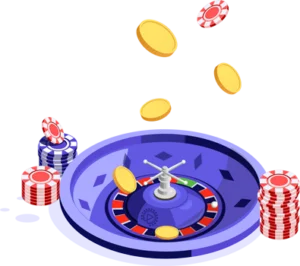American & European Roulette Differences

Roulette stands as one of the most iconic and thrilling casino games globally, captivating players with its simple yet suspenseful gameplay. Whether you're stepping into a land-based casino or exploring the vast world of online gambling from South Africa, you're bound to encounter a roulette table. However, not all roulette games are created equal. The two most prevalent variations, American and European roulette, offer distinct experiences that can significantly impact your strategy and potential outcomes.
For South African players looking to dive into the excitement of online roulette, understanding these fundamental differences is crucial. This article will break down the main distinctions between American and European roulette, covering everything from their historical roots and wheel layouts to the crucial impact on house edge and specific rules, helping you make an informed choice for your next spin.
The Origins of Roulette: A Brief History
The story of roulette begins in 18th-century France, where the brilliant mathematician Blaise Pascal inadvertently created a perpetual motion machine that laid the groundwork for what we now know as European roulette. By 1796, the game was being played in Parisian casinos, initially featuring both a single zero (0) and a double zero (00) pocket, marked in red and black respectively. To avoid confusion, these zero pockets were later standardised to green in the early 1800s.
A significant evolution occurred in 1843 when François and Louis Blanc introduced the single-zero roulette wheel in Bad Homburg, Germany. This version quickly gained popularity across Europe, offering players better odds. As the game travelled across the Atlantic to the United States in the 19th century, American casinos, seeking to increase their profits, reintroduced the double-zero pocket. This modification gave birth to American roulette, solidifying the two distinct versions we play today: European (single-zero) and American (double-zero).
Wheel Layout and Number of Pockets
The most immediate and visually striking difference between American and European roulette lies in their wheels and table layouts. This distinction is fundamental to how each game plays out:
- European Roulette: The European wheel features 37 pockets. These include numbers 1 through 36 (alternating red and black) and a single green ‘0' pocket. The numbers are arranged in a specific, non-sequential order designed to distribute high/low and odd/even numbers evenly around the wheel.
- American Roulette: In contrast, the American wheel has 38 pockets. It includes numbers 1 through 36 (alternating red and black), a single green ‘0' pocket, and an additional green '00' (double zero) pocket. The sequence of numbers on the American wheel is also different from its European counterpart, though it similarly aims for a balanced distribution of colours and values.
The presence of that extra '00' pocket on the American wheel is the root cause of most other differences between the two variations, particularly concerning the odds and house edge.
Understanding the House Edge
The house edge is a critical concept for any casino game, representing the casino's built-in advantage over the player. It's expressed as a percentage of the player's bet that the casino expects to keep over the long run. A lower house edge means better odds for the player.
- European Roulette: With only one ‘0' pocket, the house edge in European roulette is significantly lower, typically around 2.70%. This means that for every R100 wagered, the player can statistically expect to lose R2.70 over time.
- American Roulette: The addition of the '00' pocket in American roulette nearly doubles the house edge, pushing it up to approximately 5.26%. For every R100 wagered, the player can expect to lose R5.26. This higher house edge makes American roulette less favourable for players seeking to maximise their winning potential.
This difference in house edge is arguably the most important factor when choosing which roulette variant to play, especially for South African players who want to get the most value from their online casino experience.
Key Rules and Betting Options
While the core gameplay of placing bets and watching the ball spin remains the same, there are a few rule variations that further distinguish European and American roulette.
European Roulette Rules
European roulette often includes special rules that can further reduce the house edge on certain bets:
- En Prison Rule: This rule applies specifically to even-money bets (red/black, odd/even, high/low). If you place an even-money bet and the ball lands on ‘0', your bet is “imprisoned” for the next spin. If the next spin results in a win for your imprisoned bet, you get your original stake back (no winnings). If it loses, you lose the bet. This rule effectively halves the house edge on even-money bets to 1.35%.
- La Partage Rule: Similar to En Prison, La Partage is another rule for even-money bets. If the ball lands on ‘0', players lose only half of their even-money bet, rather than the entire stake. This also reduces the house edge on these bets to 1.35%. While the original article only mentioned “En Prison,” both are common European rules.
- Call Bets (Announced Bets): European roulette tables, particularly in live casino settings, often allow for “call bets” or “announced bets.” These are specific bets on sections of the wheel (e.g., Voisins du Zéro, Tiers du Cylindre, Orphelins) that cover multiple numbers. Players announce these bets to the dealer rather than placing chips on the layout themselves, though chips are then placed to cover the bet.
American Roulette Rules
American roulette generally does not feature the En Prison or La Partage rules, meaning the full house edge applies to all bets. However, it does offer one unique betting option:
- Five-Number Bet (Basket Bet): This bet is unique to American roulette due to the presence of both ‘0' and '00'. It covers the numbers 0, 00, 1, 2, and 3. While it might seem appealing to cover five numbers, this bet carries the highest house edge on the table, a staggering 7.9%, making it generally advisable to avoid.
Odds and Payouts
The payout structure for individual bets (e.g., a straight-up bet on a single number) is typically the same for both American and European roulette: 35 to 1. This means if you bet R10 and win, you get R350 plus your original R10 back.
However, the *odds* of winning are different due to the varying number of pockets:
- European Roulette: The odds of hitting a specific number are 1 in 37 (1/37).
- American Roulette: The odds of hitting a specific number are 1 in 38 (1/38).
While the payout ratio remains constant, the European wheel offers a slightly higher probability of your number hitting, making wins statistically more frequent over time.

Which Roulette Should You Play?
For South African players exploring online casinos in 2025, the choice between American and European roulette largely comes down to your preference for risk and your understanding of the odds. However, from a purely mathematical standpoint, European roulette is almost always the superior choice.
Its lower house edge (2.70% vs. 5.26%) means you have a better chance of extending your playtime and potentially walking away with winnings. Furthermore, the inclusion of rules like En Prison or La Partage on even-money bets can further reduce the house edge to a very attractive 1.35%, offering some of the best odds in any casino game.
While American roulette has its traditionalists, especially in regions where it originated, the statistical advantage offered by European roulette makes it the recommended option for most players, particularly those new to the game or looking to maximise their winning potential. Always remember to gamble responsibly and set limits for your play. If you ever feel your gambling is becoming a problem, please contact the National Responsible Gambling Programme (NRGP) on 0800 006 008.
Most Recent News
Get the latest information








